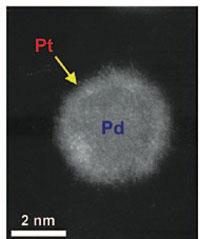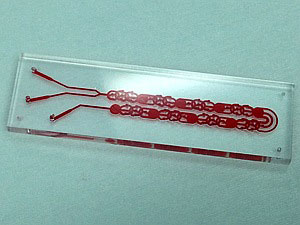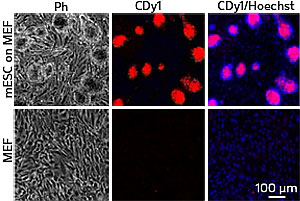Silicon microparticles, gadonanotubes promise big advance for medical imaging
A nest for nanotubes may help magnetic resonance imaging become better than ever at finding evidence of disease.
Nov 10th, 2010
Read more
A nest for nanotubes may help magnetic resonance imaging become better than ever at finding evidence of disease.
Nov 10th, 2010
Read moreThe fastest movies ever made of electron motion, created by scattering x-rays off of graphene, have shown that the interaction among its electrons is surprisingly weak.
Nov 10th, 2010
Read moreNew ultra-clean nanowires produced at the Nano-Science Center, University of Copenhagen will have a central role in the development of new high-efficiency solar cells and electronics on a nanometer scale.
Nov 10th, 2010
Read moreA consortium of 18 partners embarks on the development of a lab-on-a-chip to detect Alzheimer's disease and similar diseases in the brain. The project is funded by the EU's 7th Framework programme for nanotechnology.
Nov 10th, 2010
Read more The Zero Emissions Race promotes sustainable mobility and transportation, aims to generate popular enthusiasm for the use of renewable energy sources for vehicles, and sets the highest environmental standards for the future. The competing teams will race around the globe in 80 days.
The Zero Emissions Race promotes sustainable mobility and transportation, aims to generate popular enthusiasm for the use of renewable energy sources for vehicles, and sets the highest environmental standards for the future. The competing teams will race around the globe in 80 days.
Nov 10th, 2010
Read moreQuantum communication networks are high on Europe's agenda, with particular focus being given to quantum memory or information storage. Meeting the challenge head on to make such information accessible to users is a team of scientists from Denmark who used two 'entangled' light beams to store quantum information.
Nov 10th, 2010
Read more Palladium core protects precious platinum; enhances reactivity/stability.
Palladium core protects precious platinum; enhances reactivity/stability.
Nov 10th, 2010
Read moreStudy suggests new way for manufacturers to minimize environmental impact of carbon nanotube production.
Nov 10th, 2010
Read moreEuroNanoMed, a European funding initiative under the ERA-Net scheme of the European Commission aimed at advancing transnational research in Nanomedicine, announced today the projects that will be funded following its 2nd joint transnational call for collaborative research projects. Eight projects, involving 46 partners from 10 countries will be funded.
Nov 10th, 2010
Read more Instability is the key to mixing fluids with markedly different viscosities in microfluidic devices.
Instability is the key to mixing fluids with markedly different viscosities in microfluidic devices.
Nov 10th, 2010
Read more A fluorescent probe that selectively highlights embryonic and induced pluripotent stem cells is now available.
A fluorescent probe that selectively highlights embryonic and induced pluripotent stem cells is now available.
Nov 10th, 2010
Read moreAn optimization program that combines the use of two parallel algorithms has found an ultra-compact design for an optical coupler.
Nov 10th, 2010
Read moreA vaginal gel that affords both contraception and HIV protection using nanoparticles that carry bee venom is one of the bold, unconventional ideas that won a 2010 Grand Challenges Explorations grant from the Bill and Melinda Gates Foundation.
Nov 10th, 2010
Read more Using a neutron beam as a probe, researchers working at the National Institute of Standards and Technology (NIST) have begun to reveal the crystal structure of a compound essential to technologies ranging from sonar to computer memory.
Using a neutron beam as a probe, researchers working at the National Institute of Standards and Technology (NIST) have begun to reveal the crystal structure of a compound essential to technologies ranging from sonar to computer memory.
Nov 9th, 2010
Read moreIn two Federal Register notices, the Technology Innovation Program (TIP) of the National Institute of Standards and Technology (NIST) asks for public comments on six NIST-prepared white papers outlining potential areas for research grants and, separately, requests detailed suggestions of critical national needs and associated technical needs for future TIP funding competitions.
Nov 9th, 2010
Read moreThe researchers characterize their new technique as a neat solution to the 'needle in a haystack' problem of nanoscale microscopy, but it's more like the difference between finding the coffee table in a darkened room either by walking around until you fall over it, or using a flashlight.
Nov 9th, 2010
Read more